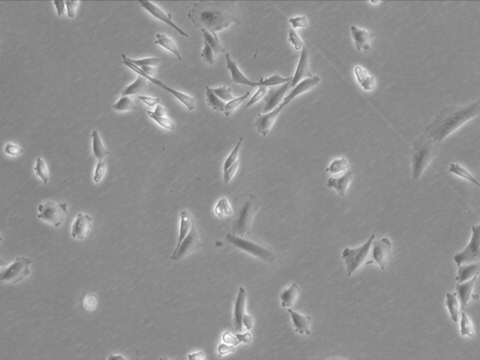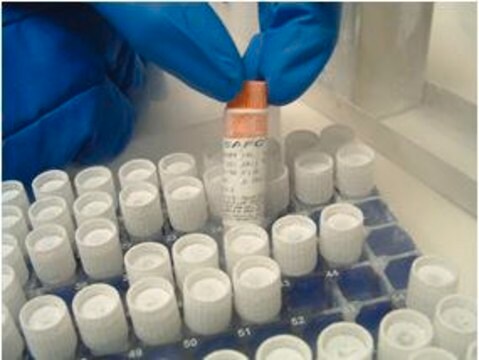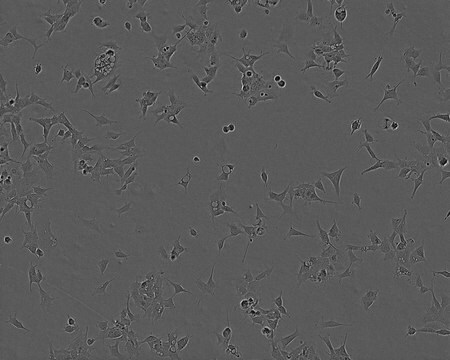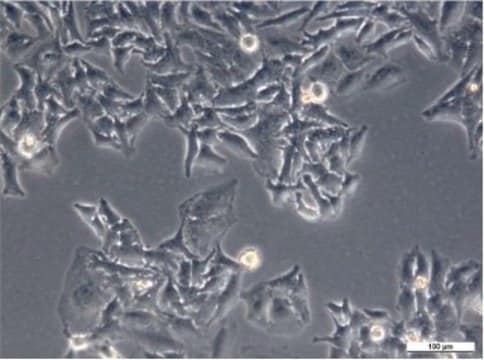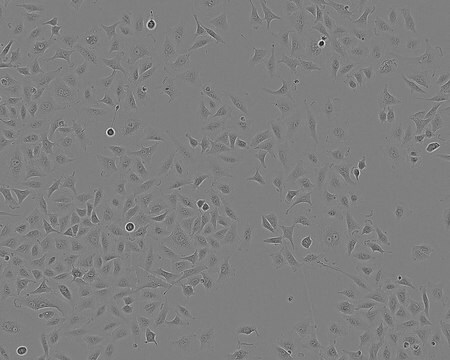CHO Cell Line from Chinese hamster ovary
85050302, hamster ovary, Epithelial
Synonym(s):
CHO Cells, CHO-ori Cells, Chinese Hamster Ovary Cells, Chinese hamster ovary cell line
About This Item
Recommended Products
product name
CHO Cell Line from Chinese hamster ovary, 85050302, from hamster ovary
biological source
hamster ovary
availability
not available in Japan
growth mode
Adherent
karyotype
Hypodiploid, modal no. 20
morphology
Epithelial
products
Not specified
receptors
Not specified
technique(s)
cell culture | mammalian: suitable
shipped in
dry ice
storage temp.
−196°C
Cell Line Origin
Cell Line Description
Application
- to generate CHO cells expressing LY6/PLAUR domain containing 3 (LYPD3)
- to carry out the vaginolysin (VLY) cytolytic activity assay
- as host cells to produce glucagon-like peptide 1 receptor (GLP1R)
Culture Medium
Subculture Routine
Other Notes
Certificates of Analysis (COA)
Search for Certificates of Analysis (COA) by entering the products Lot/Batch Number. Lot and Batch Numbers can be found on a product’s label following the words ‘Lot’ or ‘Batch’.
Already Own This Product?
Find documentation for the products that you have recently purchased in the Document Library.
Articles
Eukaryotic cell lines aid in complex post-translational modifications and folding of recombinant proteins. Find suitable recombinant protein production cell lines at sigmaaldrich.com
Our team of scientists has experience in all areas of research including Life Science, Material Science, Chemical Synthesis, Chromatography, Analytical and many others.
Contact Technical Service